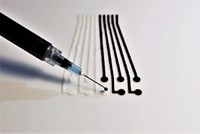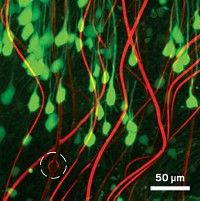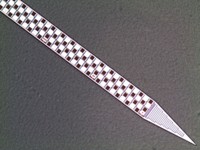Advertisement
Grab your lab coat. Let's get started
Welcome!
Welcome!
Create an account below to get 6 C&EN articles per month, receive newsletters and more - all free.
It seems this is your first time logging in online. Please enter the following information to continue.
As an ACS member you automatically get access to this site. All we need is few more details to create your reading experience.
Not you? Sign in with a different account.
Not you? Sign in with a different account.
ERROR 1
ERROR 1
ERROR 2
ERROR 2
ERROR 2
ERROR 2
ERROR 2
Password and Confirm password must match.
If you have an ACS member number, please enter it here so we can link this account to your membership. (optional)
ERROR 2
ACS values your privacy. By submitting your information, you are gaining access to C&EN and subscribing to our weekly newsletter. We use the information you provide to make your reading experience better, and we will never sell your data to third party members.
Analytical Chemistry
Nanowire Arrays Map Neural Circuits
High resolution method reveals electrical connections in the brain
by Celia Henry Arnaud
January 25, 2010
| A version of this story appeared in
Volume 88, Issue 4

Mapping the connections between neurons could lead to a better understanding of the brain. Chemist Charles M. Lieber, biologist Venkatesh N. Murthy, and coworkers at Harvard University have used arrays of nanowire field-effect transistors to record electrical signals in fresh rat brain slices with up to 5-μm spatial resolution and sub-millisecond temporal resolution (Proc. Natl. Acad. Sci. USA, DOI: 10.1073/pnas.0914737107). Other methods for recording electrical signals in the brain such as multielectrode arrays are typically limited to spatial resolution of 100 μm, because at shorter distances the signals at separate electrodes tend to be correlated. In contrast, the spatial resolutions produced by Lieber and Murthy’s method are on the scale of individual neurons. What’s more, measurements can be made simultaneously at multiple length scales. Using the nanowire arrays, the team mapped neural connectivity in the olfactory cortex in rat brains. They stimulated the brain slice at eight different spots in a region called the lateral olfactory tract and measured the response at eight nanowire transistors. They could differentiate responses even at transistors located near each other.





Join the conversation
Contact the reporter
Submit a Letter to the Editor for publication
Engage with us on Twitter